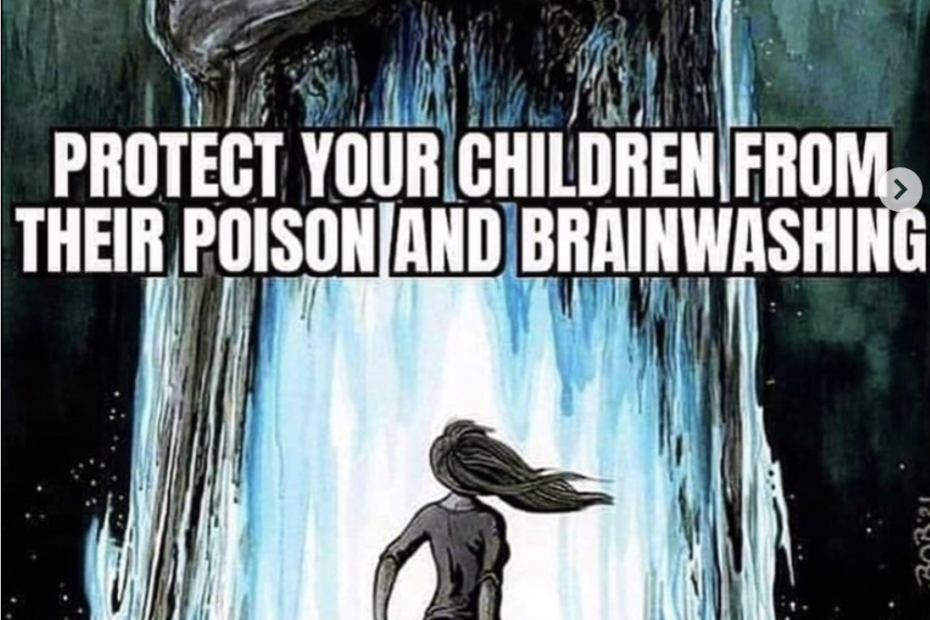Margaret Rex, University of Buffalo
In the aftermath of Hurricanes Helene and Milton, conspiracy theories seem to be everywhere. The tamest of these theories assert that FEMA is withholding aid from hurricane survivors and diverting funds to undocumented immigrants. The most bizarre of these theories assert that the Deep State and Democrats are using weather weapons to steal land for lithium mining and to keep Trump supporters from voting. When stories broke about these ‘hurricane truthers’, commenters responded with shock and derision. People don’t actually believe this, right? Similarly, when the Republican presidential ticket repeated the easily falsifiable lie that Haitian immigrants were eating pets in Springfield, Ohio, a torrent of memes mocking these beliefs flooded social media, and the absurdity of these claims was rightly mocked. But in the strange interplay of online misinformation, paranoia, racism, and fear that increasingly characterize rightwing extremism, constant shifts in the Overton Window can be deeply disorienting.
When I decided to study the families and friends of rightwing extremists, I was immediately confronted by the logistic necessity to create an operational definition of extremism to build my sample. But I struggled to do so in a moment when the mainstream against which extremism is measured seems to be drifting so quickly to the right. After all, “FEMA is stealing our tax dollars and giving them to immigrants” sounds mainstream compared to “the Deep State controls the weather” and “immigrants are eating cats”. But it’s demonstrably false and deeply racist and xenophobic. And all of these conspiracies prompt well-intentioned articles refuting them, slowly shifting the unspeakable to the laughable to the debatable.
Since I had no access to extremists themselves, and no way to verify or even measure their actual beliefs, I elected to include all respondents in my qualitative, interview-based study who viewed their loved one as an extremist, and to explore how they define and navigate extremism at the micro level, as they watch it unfold before them. This growing confusion about what constitutes mainstream versus extreme was evident from the very beginning of my data collection. Many of my respondents would reach out me first by saying, “I am not sure if my loved one is extreme enough for me to be in your study. He’s not in a militia or anything”. And then in their interviews they would describe parents who left literature about bombing abortion clinics on the coffee table, or lifelong friends who tried to stick magnets to them after they got the Covid vaccine or sold everything to live off-grid for fear of armed marauders roaming after Trump left office. They described loved ones who genuinely believe that Democrats farm and eat children, and that the Covid Vaccine corrupts human DNA and causes mind control and death. My respondents weren’t talking about impressionable teenagers, either. They were talking almost exclusively about older kin, usually their parents. The youngest extremist described to me was in her late twenties. Most were over fifty. Many reported that their loved ones only didn’t go to January 6th because their age or health made them physically unable to do so.
Respondents described their loved ones as “lost”, “gone” and “completely different people” whose extremism was defined less by a concrete orientation toward authoritarianism and more by fervor and a degree of personal transformation. Getting them to talk about what their loved ones actually believe was often difficult and secondary. Racism, xenophobia, sexism, homophobia and nationalism were often discussed less as evidence of extremism in and of themselves, and more via the erosion of critical thinking they represented. They saw their loved ones as extremist not simply because they held these beliefs, but because they should know better than to hold them and didn’t. “My father used to teach me about critical thinking. I don’t understand how he believes this garbage?”
And the answer to that question seems particularly pressing in this moment. After all, FEMA teams in Rutherford County, NC doing hurricane relief were told to “stand down and evacuate” due to reports of armed militias coming to attack them, and a 44 year old man was arrested after threatening to harm FEMA employees while in possession of an assault rifle. Haitian families in Springfield began keeping their children home from school after the presidential debate out of fear that they would be violently attacked, hospitals and schools were closed due to bomb threats, and Haitian residents reported that they had their windows smashed and their cars doused with acid. Farce can easily become tragedy, and extremist beliefs are no less dangerous when they are meme-ably absurd.
During data collection, I attended my first conference focused on studying the right and found that rightwing studies scholars have long been occupied with creating shared definitions of rightwing movements, using terms like far-right, extreme right and radical right as ways to umbrella and slice these movements. The trickiness of these relative definitions has been discussed in terms of their historical and geographic differences, and about the difficulties in mapping left/right paradigms. My research suggests that the rapid mainstreaming of rightwing beliefs and talking points since 2016 has added another challenge in creating shared definitions, one that those on the front lines of dealing with these movements-friends and family-are already facing; how do we define extremism when extremism has gone mainstream?
